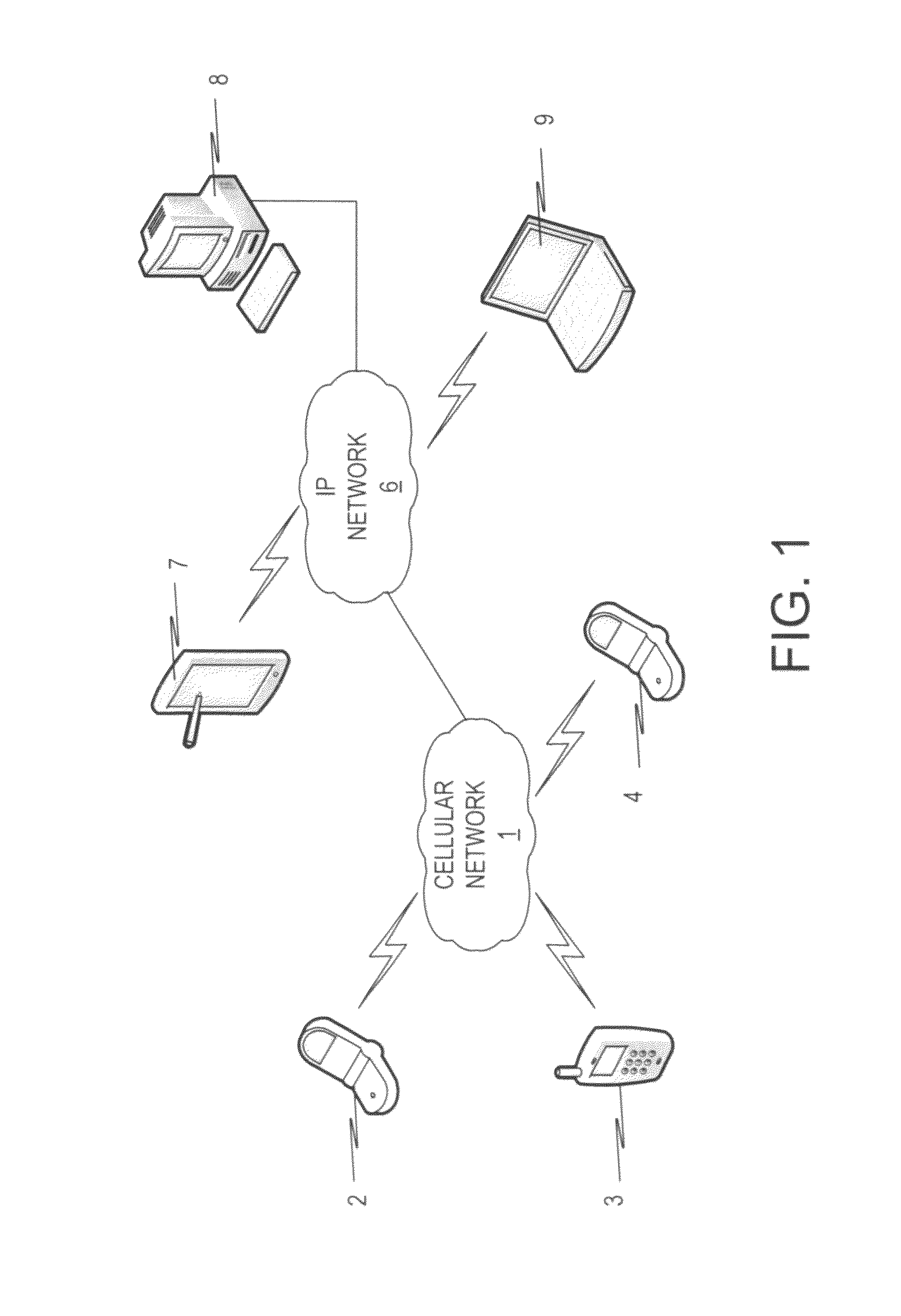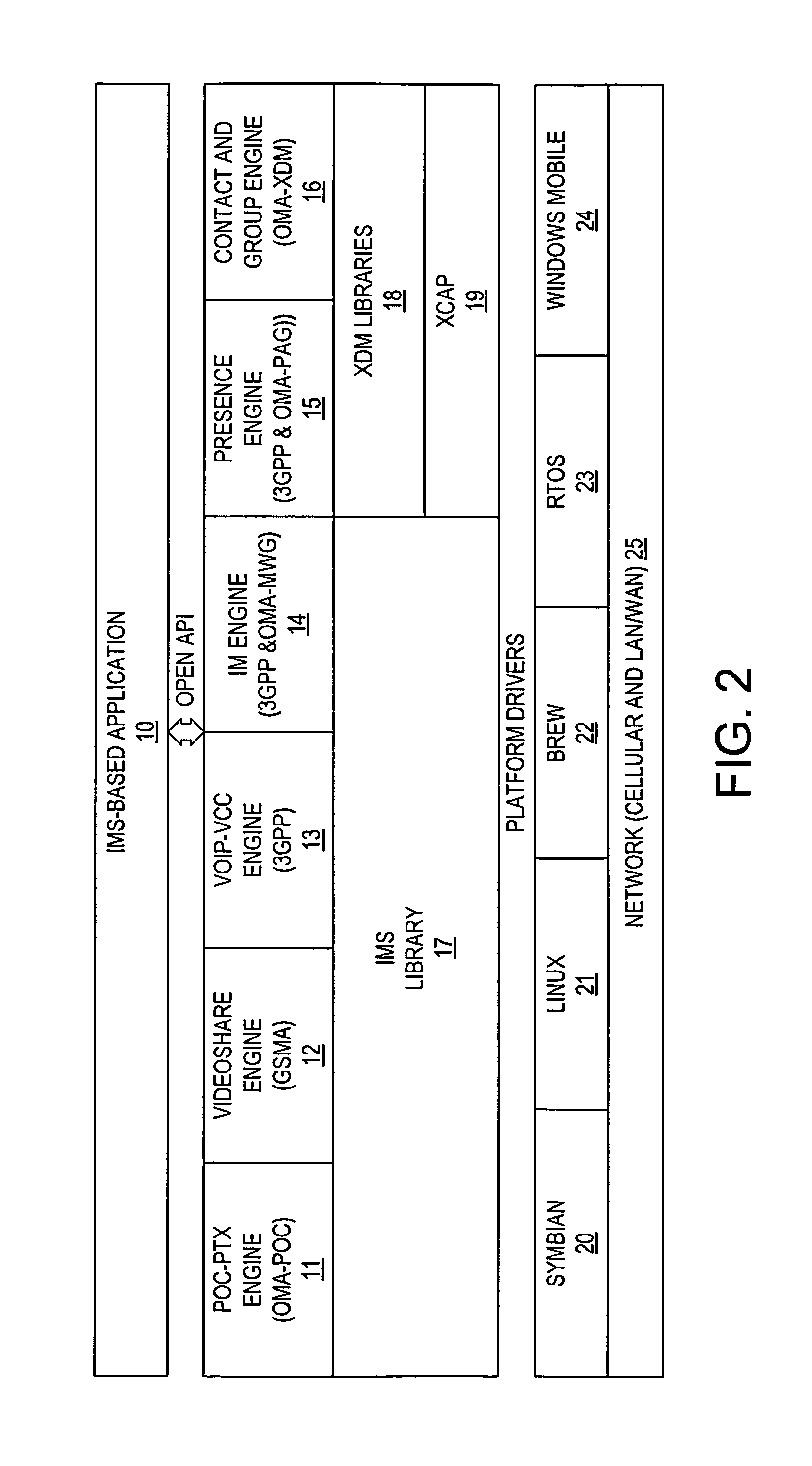System, method and apparatus for controlling multiple applications and services on a digital electronic device
a digital electronic device and control system technology, applied in the direction of electric digital data processing, instruments, computing, etc., can solve the problems of long development and deployment cycles, high cost and risk, complex application software, etc., to facilitate the availability and portability of applications, reduce development and testing time, and simplify application development.
- Summary
- Abstract
- Description
- Claims
- Application Information
AI Technical Summary
Benefits of technology
Problems solved by technology
Method used
Image
Examples
implementation example 1
Real Time Communication System
[0079]FIG. 4 is a schematic block diagram of an illustrative Internet Protocol Multimedia Subsystem (“IMS”) client architecture for handling multiple IMS applications, with particular emphasis on the application engines and enablers. The architecture is based on the general architecture shown in FIG. 2, in which the SAC 100 interacts with a platform environment, an applications environment, a network environment, and a shared engine / enabler environment. The SAC 100 abstracts these environments and includes a common set of functions, which enable interactions between these environments without requiring that any of the environments be aware of specific aspects of the other environments for the interactions.
[0080]Illustrative networks shown in FIG. 4 are 2.5G cellular network 362 and 3G cellular network 364. Illustrative services and service infrastructure 450 are a Voice over IP (“VoIP”) application server 352 and an instant messaging (“IM”) application ...
implementation example 2
Adding New Application Categories
[0085]FIG. 5 is a schematic block diagram of additional extensions, ALC's and PFD's that may be added to the implementation of Example 1 to add new application categories. The category of mobile commerce is added in this Example.
[0086]Additional engines 430 added through the extension interface 120 include a digital Identity engine 432 which manages the user's application and service identities and credentials; a digital wallet engine 434 which manages the user's information such as banking accounts, credit cards, payment credits, financial and points information, loyalty and membership information; a merchandising manager engine 436 which handles merchandising items such as advertisements, promotions such as coupons and special offers, and recommendations; a situation engine 438 which provides situation awareness information such as location, availability, local connection and service availability; a context engine which provides preference, history...
PUM
 Login to View More
Login to View More Abstract
Description
Claims
Application Information
 Login to View More
Login to View More - R&D
- Intellectual Property
- Life Sciences
- Materials
- Tech Scout
- Unparalleled Data Quality
- Higher Quality Content
- 60% Fewer Hallucinations
Browse by: Latest US Patents, China's latest patents, Technical Efficacy Thesaurus, Application Domain, Technology Topic, Popular Technical Reports.
© 2025 PatSnap. All rights reserved.Legal|Privacy policy|Modern Slavery Act Transparency Statement|Sitemap|About US| Contact US: help@patsnap.com



